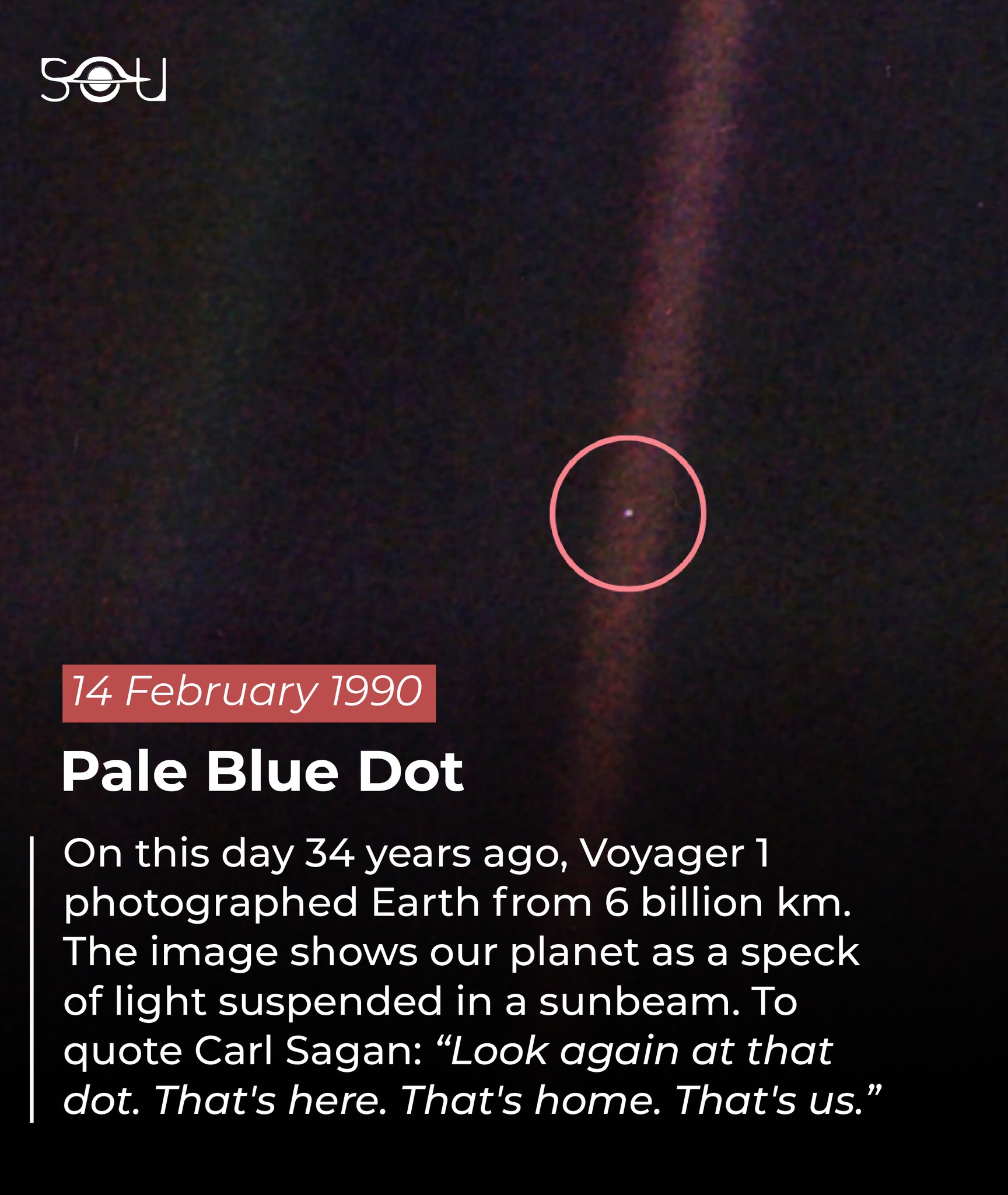An element of luck played a role in the dramatic impact of the photograph. The image features scattered light patterns that resemble sunbeams, which were actually artifacts resulting from the necessity of pointing the camera close to the Sun.
Voyager 1 was very far from the Sun, about 40 times the distance between the Earth and the Sun, so Earth looked really close to the Sun in the picture. Remarkably, one of these rays of scattered light intersected with Earth by chance, enhancing the photo's dramatic effect.
The process of capturing and transmitting this image was a technical challenge. On February 13, the cameras of Voyager 1 were powered up, requiring three hours to warm up in the coldness of space. The images were then saved on the spacecraft's onboard tape recorder. Because Voyager 1 was so far from Earth, the images of Earth snapped by the probe captured light that had left our planet five hours and 36 minutes earlier.
The next important part of the process was downloading. The spacecraft was so far from Earth it took several communications passes with NASA's Deep Space Network over a couple of months to transmit all the data. The last of the image data were finally downloaded on Earth on May 1, 1990.
After Voyager 1 took these iconic pictures on February 14, 1990, the spacecraft's cameras were permanently turned off. Twenty-two years later, in 2012, it became the first spacecraft to enter interstellar space. Today, at a distance of 15 billion miles or 24 billion kilometers, it is the farthest man-made object in space. The two Voyager spacecraft are still beaming back data from regions of the cosmos we have never explored.
Voyager 1 was very far from the Sun, about 40 times the distance between the Earth and the Sun, so Earth looked really close to the Sun in the picture. Remarkably, one of these rays of scattered light intersected with Earth by chance, enhancing the photo's dramatic effect.
The process of capturing and transmitting this image was a technical challenge. On February 13, the cameras of Voyager 1 were powered up, requiring three hours to warm up in the coldness of space. The images were then saved on the spacecraft's onboard tape recorder. Because Voyager 1 was so far from Earth, the images of Earth snapped by the probe captured light that had left our planet five hours and 36 minutes earlier.
The next important part of the process was downloading. The spacecraft was so far from Earth it took several communications passes with NASA's Deep Space Network over a couple of months to transmit all the data. The last of the image data were finally downloaded on Earth on May 1, 1990.
After Voyager 1 took these iconic pictures on February 14, 1990, the spacecraft's cameras were permanently turned off. Twenty-two years later, in 2012, it became the first spacecraft to enter interstellar space. Today, at a distance of 15 billion miles or 24 billion kilometers, it is the farthest man-made object in space. The two Voyager spacecraft are still beaming back data from regions of the cosmos we have never explored.
An element of luck played a role in the dramatic impact of the photograph. The image features scattered light patterns that resemble sunbeams, which were actually artifacts resulting from the necessity of pointing the camera close to the Sun.
Voyager 1 was very far from the Sun, about 40 times the distance between the Earth and the Sun, so Earth looked really close to the Sun in the picture. Remarkably, one of these rays of scattered light intersected with Earth by chance, enhancing the photo's dramatic effect.
The process of capturing and transmitting this image was a technical challenge. On February 13, the cameras of Voyager 1 were powered up, requiring three hours to warm up in the coldness of space. The images were then saved on the spacecraft's onboard tape recorder. Because Voyager 1 was so far from Earth, the images of Earth snapped by the probe captured light that had left our planet five hours and 36 minutes earlier.
The next important part of the process was downloading. The spacecraft was so far from Earth it took several communications passes with NASA's Deep Space Network over a couple of months to transmit all the data. The last of the image data were finally downloaded on Earth on May 1, 1990.
After Voyager 1 took these iconic pictures on February 14, 1990, the spacecraft's cameras were permanently turned off. Twenty-two years later, in 2012, it became the first spacecraft to enter interstellar space. Today, at a distance of 15 billion miles or 24 billion kilometers, it is the farthest man-made object in space. The two Voyager spacecraft are still beaming back data from regions of the cosmos we have never explored.


